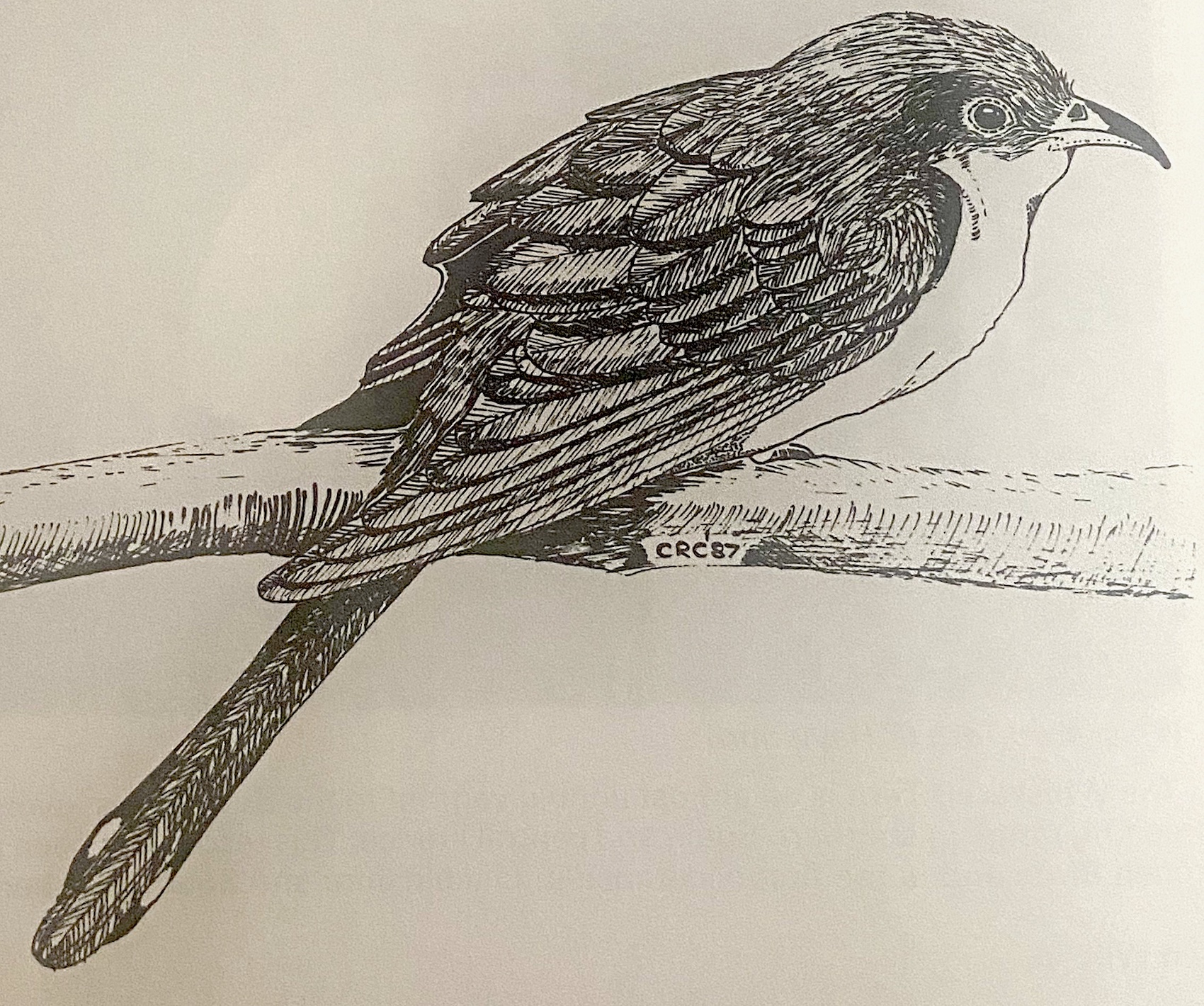Yellow-billed Cuckoo Coccyzus americanus

Between 1950-2020 there were 55 records and it remains a rare bird in Britain with about one every 1-2 years. The month of October accounts for 70% of British records and a significant percentage of this species arriving in Britain are either dying or found dead. Those which survive may remain for 10-12 days and are frequently observed feeding on either caterpillars of (in the southwest) Stick insects, several species of which have become naturalised in the southwest. Smooth Stick Insect, Clitarchus hookeri, and Mediterranean Stick Insect, Bacillus rossius colonies have become established on the Isles of Scillies, for example, whereas Prickly Stick Insect Acanthoxyla geisovii, is now found in Devon around Torbay, and in Cornwall around St Mawes. It is also widespread in the Isles of Scilly on Tresco, and more recently found on St Mary's and Bryher.
| Site | First date | Last date | Count | Notes |
| Boothby Hall, Welton le Marsh | 30/10/1978 | 1 | ||
| Rauceby Warren LWT reserve | 18/10/1987 | 19/10/1987 | 1 |
Yellow-billed Cuckoo at Rauceby Warren October 18th-19th 1987: first live county record.
by Alan Ball
Circumstances
The first county record involved a bird found dead at Boothby Hall near Welton-le-Marsh on 30th October 1978. It was considered a young bird, was in excellent condition and was subsequently preserved and retained in Lincoln Museum. This occurred just 3 days after a juvenile was caught in the warren trap at Spurn on 27th October 1978 which was released shortly after although but was not seen again. The first Lincolnshire record to be seen alive was a bird discovered by Mr and Mrs Brooks at the LSHTNC reserve at Rauceby Warren near Sleaford during the afternoon of 18th October. They were sure of its identification and told several observers that night.
The ‘local’ birders were presented with something of a problem in that this was a bird obviously brought across country during the hurricane force winds two days earlier and its condition was not known. Given the fact that most Yellow-billed Cuckoos that are found in Britain are usually found dead or dying it was decided not to ‘put the news out’ until the state of the bird was ascertained the next morning. The last thing (anyone) wanted was for the birders to be accused of harassing a bird to death on a nature reserve if it was dying anyway. An hours search in the morning revealed nothing and it was assumed that the bird had gone or had not survived the night. However, the bird was re-discovered by Barry Hancock about mid-morning. It was judged to be in good health and the ‘news’ was immediately put out and allowing many birdwatchers to see this bird during that afternoon and evening. It was fairly active and looked quite settled, feeding quite well, and it was hoped that it might stay for several days. However, it was not to be found the next day.
Description
A smaller and slimmer version of Cuckoo with a comparatively longer tail and rounded wings. Upperparts, head, wings and upper tail grey-brown except for primaries which were rufous. Underparts were white with a buffish wash to breast. Underside of long graduated tail dark grey with extensive white tips. Bill decurved; upper mandible black with a yellowish base and lower mandible yellow with just the extreme tip dark. Eyes dark with a yellow eye-ring. Legs and feet were slate grey. The flight was generally fast and low (worrying when crossing the main road in front of lorries). In flight the rufous in the wings and the white tips to the tail could clearly be seen. The bird was fairly active, usually perching on the tops of bushes or on roadside fences from which it would drop down onto the ground to feed. It was seen to take several crane flies and a caterpillar.
The Yellow-billed Cuckoo is a summer visitor to much of North America as far north as the Canadian border and winters in South America. This record has been accepted by British Birds and is the first live specimen of this trans-Atlantic vagrant to be found in Lincolnshire and South Humberside, with an earlier record of one found dead at Welton near Skegness in October 1978.
(Account as per new Birds of Lincolnshire (2021), included September 2022)

